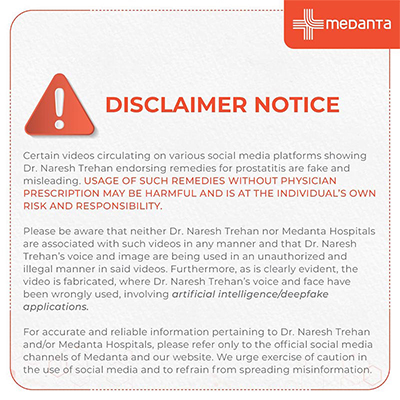Strengthening the Core: Postnatal Exercise for Abdominal Recovery

Based on a recent study, 85% of postnatal women who engaged in targeted core exercises experienced significant improvement in abdominal strength and recovery within the first six weeks postpartum. Becoming a mother is a transformative experience, both physically and emotionally.
While the joy of bringing a new life into the world is unparalleled, it's crucial to acknowledge and address the changes that occur in a woman's body during and after pregnancy. One aspect that often requires attention is the abdominal region, where the core muscles undergo significant stress and stretching. Postnatal exercise plays a pivotal role in aiding abdominal recovery, promoting overall well-being, and restoring a sense of strength and vitality.
The Importance of Postnatal Exercise
The postpartum period is a delicate phase where a woman's body goes through numerous adjustments. The physical demands of childbirth, coupled with hormonal changes, can leave the abdominal muscles weakened and stretched. Engaging in postnatal exercise becomes essential not only for regaining pre-pregnancy fitness but also for enhancing overall health and promoting emotional well-being.
Recognizing core strength's importance is vital during this period. Core muscles encompass not just surface-level abs but also deeper ones supporting the spine and pelvis. A sturdy core is key for stability, proper posture, and is crucial for daily tasks, especially for moms tending to their infants.
However, it's essential to set realistic expectations. The journey to abdominal recovery is not a race but a gradual process that requires patience and consistency. Before starting any postnatal exercise routine, it's advisable to consult with a healthcare professional, particularly if there were complications during pregnancy or childbirth.
Postnatal Exercise Types
Here are some of the most common postnatal exercise types:
Low-Impact Cardiovascular Exercises
Walking and Brisk Walking
Walking is a gentle yet effective way to kick start postnatal exercise. It aids in improving cardiovascular health without putting excessive strain on the recovering body. Brisk walking, in particular, helps elevate the heart rate and promotes calorie burning.
Swimming and Water Aerobics
The buoyancy of water reduces the impact on joints while providing resistance for a full-body workout. Swimming and water aerobics are excellent choices for postnatal exercise, offering cardiovascular benefits without compromising safety.
Stationary Cycling
Stationary cycling provides a low-impact alternative to traditional cycling, allowing new mothers to engage in cardiovascular exercise without the risk of falls or joint stress. It's a great way to gradually build stamina and endurance.
Core-Strengthening Exercises
Pelvic Tilts and Bridges
Pelvic tilts help activate the abdominal muscles, especially the lower abdominals. Bridges, on the other hand, engage the glutes and lower back muscles while promoting stability in the core.
Modified Planks and Plank Variations
Planks are renowned for their effectiveness in targeting the entire core. Modified planks offer a gentler approach, allowing gradual progression. As strength increases, variations such as side planks can be introduced for added challenge.
Leg Slides and Heel Slides
These exercises focus on engaging the deep core muscles while promoting flexibility in the hips. They are particularly beneficial for women recovering from a caesarean section, as they minimise stress on the abdominal area.
Pelvic Floor Exercises (Kegels)
Strengthening the pelvic floor is integral to postnatal recovery. Kegel exercises, which involve contracting and relaxing the pelvic floor muscles, aid in improving bladder control and supporting overall pelvic health.
Flexibility and Stretching
Gentle Yoga for Postnatal Recovery
Yoga offers a holistic approach to postnatal exercise, combining strength, flexibility, and relaxation. Gentle yoga poses help release tension in the body while promoting mindfulness and stress reduction.
Pilates for Core Engagement and Flexibility
Pilates focuses on controlled movements that target the core muscles. It's an effective way to rebuild abdominal strength while improving overall flexibility and posture.
Incorporating Dynamic Stretches
Dynamic stretches help improve blood flow and flexibility, preparing the body for more intense exercise. Incorporating dynamic stretches into the routine can enhance the overall effectiveness of the postnatal exercise program.
Postnatal Belly Exercises
Diastasis recti, the separation of the abdominal muscles, is a common concern for postpartum women. Understanding this condition is the first step toward addressing it effectively.
Explanation of Diastasis Recti
Diastasis recti occurs when the connective tissue between the abdominal muscles stretches, leading to a gap. This condition can result in a protruding belly and compromised core strength.
Exercises to Help Close the Gap
Specific exercises, such as abdominal compressions and gentle twists, can aid in closing the gap caused by diastasis recti. It's crucial to perform these exercises mindfully, focusing on proper form and avoiding movements that exacerbate the separation.
Consulting a Healthcare Professional
Women experiencing diastasis recti should consult with a healthcare professional or a physiotherapist specialising in women's health. They can provide personalised guidance and recommend exercises tailored to the individual's condition.
Pelvic Floor Exercises
The pelvic floor undergoes significant stress during pregnancy and childbirth. Prioritising its recovery is crucial for overall well-being, including bladder control and core strength.
Kegel exercises, pelvic tilts, and deep abdominal breathing are effective in strengthening the pelvic floor muscles. These exercises should be incorporated into the daily routine to promote optimal recovery.
Making pelvic floor exercises a habit is key to their effectiveness. Whether during diaper changes, while nursing, or during moments of rest, finding opportunities to engage the pelvic floor muscles helps build strength over time.
Postnatal Recovery
Patience and Gradual Progression
Stressing the Importance of a Slow and Steady Approach
Patience is a virtue in postnatal recovery. Rushing into intense exercise can hinder rather than aid recovery. Emphasise the importance of gradually increasing intensity as strength and stamina improve.
Avoiding Overexertion in the Early Postpartum Period
The body needs time to heal, and overexertion can lead to setbacks. Encourage new mothers to listen to their bodies, acknowledging that rest is equally important as exercise during the initial postpartum phase.
Nutritional Support for Recovery
Balanced Diet for Postnatal Healing
A well-balanced diet is fundamental to postnatal recovery. Nutrient-rich foods support healing and provide the energy necessary for the demands of motherhood. Emphasise the importance of a diet rich in lean proteins, whole grains, fruits, and vegetables.
Foods That Promote Muscle Recovery and Energy
Emphasise foods promoting muscle recovery, like those abundant in omega-3 fatty acids, antioxidants, and vital vitamins/minerals. Stress the importance of hydration, particularly for nursing mothers.
Rest and Self-Care
Prioritising Adequate Sleep for Recovery
Sleep is a precious commodity for new mothers. Lack of sleep can impede the body's ability to recover and affect overall well-being. Encourage the importance of creating a sleep routine and seeking support to ensure adequate rest.
Incorporating Stress-Relieving Activities
Managing stress is integral to postnatal recovery. Incorporating activities such as meditation, deep breathing, or simply taking a few moments for oneself can contribute to a more balanced and resilient mindset.
Conclusion
In conclusion, postnatal exercise is a transformative journey that extends beyond physical recovery. It's an opportunity for new mothers to reconnect with their bodies, rebuild strength, and prioritise their overall well-being. By incorporating a variety of low-impact cardiovascular exercises, core-strengthening routines, and targeted belly exercises, women can navigate the path to abdominal recovery with confidence.
It's essential to approach postnatal recovery holistically, recognizing the interconnectedness of physical and mental well-being. Embrace patience, consistency, and self-care for a successful postnatal exercise plan. New moms, with support when needed, can journey toward healing, resilience, and empowerment. Remember, a robust core signifies not only physical strength but also the incredible strength of motherhood.


